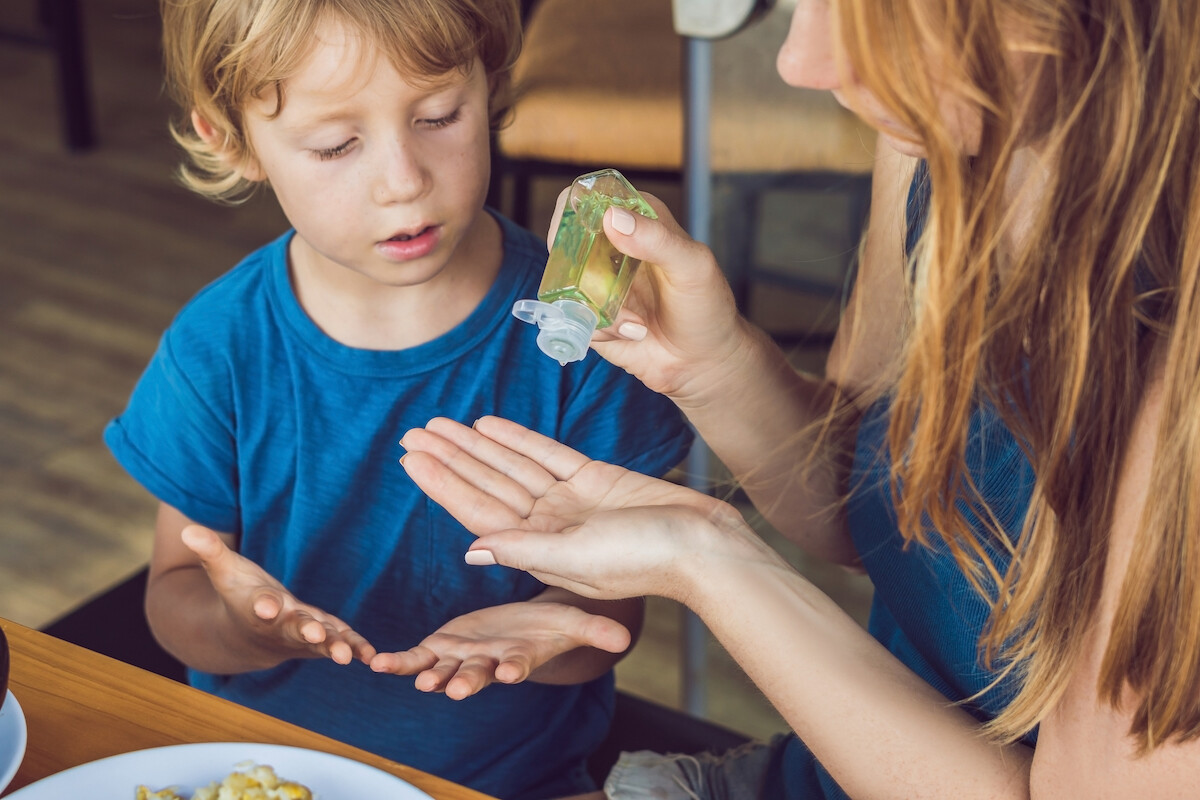Communication dilemma
Sophie and her mum enter my adjustment room straight from a toilet visit. Mum is frantically rubbing in antibacterial hand sanitiser. I’m thinking is there no soap in the bathroom? Has the council cut off the water at the street? Are we out of paper hand towels? I’m sure the bathroom is clean, as it is early Monday morning and the cleaners were in yesterday.
I really don’t like public toilets either, but the stuff she is rubbing on her hands is potentially worse than the microbes she can pick up there. Although many of the nasty Endocrine Disrupting Chemicals such as triclosan have been voluntarily removed even from Australian products (Australia appears to insists on being the last nation standing, allowing several toxic products in our food and environment which have been banned in the rest of the western world), many antibacterial products such as benzalkonium chloride, ethyl alcohol, and isopropyl alcohol are still under investigation by FDA. Animal studies have indicated that exposure to products like these may be associated with gut inflammation and bowel cancer (1) and asthma (2,3). Wikipedia mentions that benzalkonium chloride is a suspected respiratory toxicant, immunotoxicant, gastrointestinal toxicant and neurotoxicant. Another important factor is the fact that these products causes antibacterial resistant microbes, with potential horrific outcomes for both humans and the environment (4).
So I’m in a bit of a dilemma. How best to approach this situation? This is a question of opinions, and although I am right, I can’t make her realise that she is wrong, because she is doing what she thinks is right. I have a bit of a tendency to bowl people over with my opinions, and I am aware no one wins in that situation. Maybe I should just let it go?
Letting it go and not speaking up is how we chiros have gotten into the challenging situation we are in at the moment, so I decide that is not an option. I gently start by asking what she is using on her hands. And why? I then involve her in a conversation about bugs: We live in a world of bacteria. We are totally surrounded by them; they are in the air, in our water, in our beds and on our cutlery. They live on us and in us, on our skin, on our hands, in our noses, throats and guts. Some bacteria are bad guys and cause diseases. Most of them are not, they just live there and don’t do us any harm. Some bacteria, as those inhabiting our guts are absolutely essential for our survival, let alone health and wellbeing.
The harmless bacteria in us and on us have a very important job to do; they take up important real estate, preventing nasty ones from moving in. Hence, it is important we treat them nicely. Nicely means obviously keeping clean and washing hands regularly, using normal soap and water that washes away dirt and grime, but keep harmless bacteria happy and healthy.
In a 2015 study in the British Medical Journal, researchers compared the health of children in clean and not-so-clean households. They found children who lived in houses that were regularly cleaned with bleach (which kills ALL the bacteria, both the good and bad) were much sicker than the kids that lived in less germo-phobic homes. The ‘bleach kids’ had 18% greater risk of any type of infection, 20% higher risk of flu and 35% higher risk of recurrent tonsillitis (5).
Sophia’s mum appeared to enjoy our conversation. I don’t think I convinced her – who can speak against years of advertising and conditioning? However, she listened and appeared to think about what I was saying. Either way, I spoke up to the best of my ability, and conveyed my truth while respecting hers.
How do you handle difficult conversations like these?
References:
- https://academic.oup.com/toxsci/article-abstract/163/2/490/4921230
- Malo, J; Chan-Yeung, M; Bernstein, D I (2013). Asthma in the Workplace (4, illustrated, revised ed.). CRC Press. p. 198
- https://toxnet.nlm.nih.gov/cgi-bin/sis/search2/r?dbs+hsdb:@term+@DOCNO+234
- https://www.ncbi.nlm.nih.gov/pubmed/23924280
- Casas, L., et al. Domestic use of bleach and infections in children: a multicentre cross-sectional study. Occup Environ Med, (2015) April



